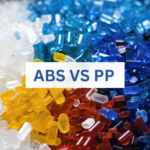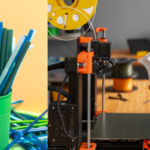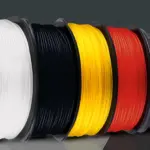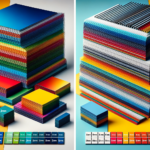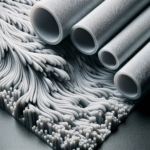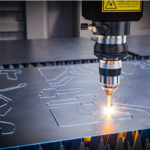What do you do when you have a bit if used metal stored in your warehouse, but unfortunately its not in the correct dimension? The first thing you immediately do is alter its dimension to your required size. But how will you do it?
Well, the whole process gets tedious when
When do you want to use a bit of metal for any application but isn’t of the dimensions that you simply want, what is going to you do? The foremost immediate option is to chop it into the specified size or maybe a shape. But which machine cutting method do you have to use?
There are different methods of cutting machines. The manual machine cutting methods are used for quite while machines were cut manually using differing types of tools.
Laser Cutters are great tools offering the likelihood to make many various things. Either it starts from simple boxes to engraving detailed graphics into wood or complex three-dimensional objects.
Laser cutters are utilized in many industries to treat people, detect motion, and manufacture products. Computer-controlled (CNC) laser cutting, marking, and engraving machines are convenient due to creating industrial and custom consumer products like signs, badges, gears, tags, etc. Various CNC laser-based machines allow running differing types of tasks counting on a selected application.
In this comprehensive guide, we’ll explain the fundamentals of how a laser cutter works, give you some example of things that will be made with a laser and the way to make designs for laser cutting or engraving. You’ll also learn which materials are often used and the way to urge access to a laser cutter.
Table of Contents
What is Laser cutting?
Laser cutting may be a sort of CNC cutting where a beam of light is employed to chop material. Although it’s mostly used for cutting metals, the beams are often used on other materials like wood glass, silicon among many others.
The full form of the word “Laser” is Light Amplification by Stimulated Emission of Radiation that was developed within the 1960s.
Just when the laser cutting method was invented, the beam of light was channeled to the target object through a special glass. Later on, the beam was designed to be directed through fiber optics. This method increases the accuracy level of the beam.
There are special lenses that make sure that the beam of light focuses on one work area. This beam can cause the fabric therein area to burn, melt, or vaporize. The tactic to be executed will depend upon the sort of laser cutter that you simply use.
Why lasers are used for cutting?
Lasers are used for several purposes. A method they’re used is for cutting metal plates. On low-carbon steel, chrome steel, and aluminum plate, the laser cutting process is very accurate, yields excellent cut quality, features a very small kerf width and little heat affect zone, and makes it possible to chop very intricate shapes and little holes.
How does it work?
There are two main sorts of lasers utilized in cutting, CO2 lasers and neodymium (Nd) and neodymium yttrium-aluminum-garnet (Nd-YAG). We use only CO2 lasers, so for simple this introduction we will be able to specialize in them.
The beam is emitted from a laser tube when a current is skilled, this reflects off mirrors to point the beam through a focal lens within the machine head. The lens focuses the beam to some extent on the surface of flat sheet material, melting, vaporizing, or burning the fabric at that time and moving along the cutting line as dictated within the vector file that the machine has been given. This melting and vaporization process of the fabric, exclusively with plastics leaves a melted, virtually polished edge, requiring small to no finishing, together with on the finished purpose.
A focused cutting beam means the ‘kerf’ (the amount of fabric removed by the laser) is extremely little as compared to a blade or leading edge. This does vary from material to material and depends on the thickness, for many purposes, this is often negligible, but it’s best to contact us for specific tolerances for work. This also allows tight nesting of laser cut parts to scale back waste and make the foremost of your material, we recommend leaving 2mm between each bit to be safe.
Types of laser cutting:
- CO2 laser
- Nd: YAG Laser
- Fiberglass laser
The CO2 laser is one of the foremost common types utilized in cutters. It operates through an electrically stimulated dioxide mixture. Modern CO2 lasers use radiofrequency energy rather than electrodes. The older versions weren’t completely risk-free since the electrodes inside a cavity could face electrode erosion.
Nd: YAG Lasers use crystals and laser diodes or flash-lamps to pump the beams, which ends up in large cutting capabilities. Therefore, these crystal lasers are commonly utilized in welding, industrial-grade cutting, and manufacturing.
Fiberglass laser uses a “seed laser” that’s amplified by glass fibers and diodes. This sort is far stronger compared to CO2, and it is often used on both metal and non-metal materials.
What are you able to do with a laser cutter?
In general, there are three tasks that a laser cutter can perform: Cutting, Engraving, and Marking.
Cutting:
When the beam goes all the way through the fabric of the workpiece it creates a cut. A laser-cut is usually very precise and clean. The design of the cut edges depends on the fabric. For instance, the sides of cut wood are typical of a darker brown than the first wood. The sides of acrylic don’t change color and have a pleasant glossy finish after laser cutting.
The kerf of a laser cutter is extremely small. The term kerf refers to the width of the groove made while cutting. This varies from material to material and is additionally hooked into the precise settings of the laser. For several materials, the kerf is going to be somewhere between 0.05 mm (0.002 in) and 0.5 mm (0.02 in).
Engraving:
It is called engraving when the beam removes parts of the highest material but doesn’t cut through the fabric.
Marking:
Marking is when the laser doesn’t remove material except, for example, changes the color of the fabric. With CO2 laser cutters marking is usually used when working with metals.
A marking solution (e.g. CerMark or Enduramark) is applied on the surface of the workpiece. After drying of the marking solution an engraving is performed. The warmth from the laser bonds the answer to the metal, leading to a permanent mark.
Services
There are many situations where you’ll want to urge quite the overall laser cutting services.
The most common reason is you would like your metal to be cut specially. Maybe the fabric is delicate and wishes for some special sorts of treatment.
Another reason is you would like to urge special shapes and styles from the laser cutting process.
Regardless of the rationale, a reliable laser cutting company should be ready to deliver custom cut on your material. They need laser machines and experts who can handle custom projects efficiently.
The secret of custom laser cutting is communication. Communicate everything that you simply want, and that they will do the work.
What is the value of Laser Cutting Services?
Usually, the worth of laser cutting is calculated per the quantity of labor done. In most cases, it’s the value per inch of the fabric to be cut.
But still, many other factors determine the value of the laser cutting service. These factors include:
- The type of material: Some materials are often easily cut by the laser machine while others are hard. This automatically means the value of laser cutting them will vary.
- The cost of laser cutting: Cost will never be an equivalent between steel, copper, chrome steel, aluminum, or the other metal.
- The thickness of the material: the value will vary counting on the thickness of the metal. You’re likely to pay more for cutting thicker materials than for thinner materials.
- The quantity of the fabric: that’s the quantity of the material for the laser cutting project? You’ll pay more for laser cutting large quantities of metals than for low quantity.
- Laser distance: this is often the space that the beam is predicted to penetrate the fabric. You’ll pay more for cutting deeper into the machine than for shallow cutting.
- Auxiliary services: Extra services for laser cutting projects include packaging, cleaning, and transportation. These also can contribute to the last word price of the project.
- The cost of laser cutting services also tends to vary between companies. The simplest way of knowing is to contact the laser cutting services companies directly. This way, you’ll be ready to get the precise quotes.
Who must use this manufacturing technique?
Laser cutting is for everybody. Companies are checking out an advantageous manufacturing method, engineers, designers, or artists. Laser cutting is employed for industrial manufacturing applications, but it’s also how to customize products. For instance, some companies offering products made with laser cutting also are offering their products with personalized engraving. Indeed this manufacturing technique has many various benefits. First, it’s a very precise method to chop materials. It’s also a cost-friendly technique, which is usually a serious advantage. It is often useful for various applications from jewelry and furniture, to business cards; anything is feasible because of this amazing manufacturing method.
Laser cutting could benefit your company and regardless of what are your sector and your project; you’ll find the right laser cutting material for it! Plus, confine mind that this technology is often used for both prototyping and production.
Laser Cutter Materials
While there are some materials that you simply definitely shouldn’t use, you’ll find that the subsequent list gives you plenty to figure with. The sole thing to recollect is different materials may give off different fumes, so ensure you’re working during a well-ventilated area to be safe.
-
Wood:
Wood is one of the foremost common laser cutting materials. It’s common for beginners and even professionals to use a laser cutter for wood to chop out pieces to assemble, engrave gifts and carve out intricate patterns during a piece of wood. You’ll laser cut most sorts of wood. If you’re cutting all the way through, a thinner piece will work better.
Plywood and MDF (medium-density fiberboard) are commonly used since they’re cheaper. However, bamboo may be a great environmentally-friendly option. Ideally, practice with MDF or plywood first before trying anything costlier.
-
Plastic and Acrylic:
When you use a laser cutter for acrylic, you’ll create some truly amazing pieces of art. Plastic and acrylic materials are ideal for creating signs, jewelry, ornaments, wall art, and far more. Believe it or not, you have a wider sort of acrylics to select from than wood.
Plexiglass especially colored plexiglass maybe a popular acrylic. Create beautiful stained glass-style artwork. Very similar to wood, you’ve got various thicknesses to settle on from.
-
Foam:
Foam works well for creating inserts and seals, though you would possibly think about using it for kids’ projects too. As an example, you’ll laser cut thick foam pieces to make fun, custom puzzles. While it’s not as popular for home projects the maximum amount as other materials, it’s still an honest choice to try.
-
Metal:
Using a laser cutter for metal is often a touch tricky. If you’re planning on cutting completely through the metal, you’ll get to use thinner pieces, such as 0.06” thickness or thinner chrome steel. Otherwise, CO2-based laser cutters might warp the metal. However, a laser cutter works extremely well for engraving metal.
-
Leather:
Once you’ve practiced a touch with other laser cutting materials, you would possibly want to undertake your hand at leather. It’s an upscale material, but the results look amazing. You’ll create wallets, belts, purses, jewelry (especially bracelets), and artwork. When using leather, make sure the piece is held securely to avoid any warping.
-
Cardboard:
Cardboard is one of the foremost inexpensive laser cutter materials. It’s also one among the simplest to figure with. Create everything from impressive business cards to model-building pieces. Typically, you’ll choose from corrugated, grey, and cellulose. Grey and cellulose are the simplest options for crafting and model building.
-
Cork:
Cork isn’t a cloth you’ll likely work with often. However, it’s fun to use for creating kids’ craft pieces. Of course, if you’d wish to make your custom coasters, cork is that the perfect material and you laser cut it into any shape you would like. The one thing cork doesn’t work well with is engraving as it’s a weaker material that tends to chop through easily.
-
Textiles:
Laser cutting textiles may be a newer option. Work with a laser cutter for cloth works as a sort of digital embroidery. You get similar leads to tons less time. While leather is one sort of textile, cotton, nylon, polyester, and silk are all options too.
-
Paper:
In most cases, once you use a laser cutter for paper, you’ll likely be cutting a kind of cardboard. Though, thick card-stock paper works sound good with laser cutters. An ingenious project to undertake with paper is custom cards with a laser-cut center scene. These are beautiful and make great gifts.
Overall, there aren’t many materials you can’t use. Ideally, you ought to avoid glass, unless you’re engraving. Any material that contains chlorine, like vinyl or PVC, isn’t recommended either.
Advantages of laser cutting:
- Lasers are generally better in rounded shapes compared to mechanical tools that have more geometrical limitations.
- Speed is another big benefit of a laser cutter. The laser is in a position to chop thick materials in one run, while other cutters may require several passes.
- Fewer consumables and replacements. There’s no got to buy various tools and alter them to proceed with different cuts as there are not any bits to wear. Some owners mention they also economize by eliminating material preparation and edges post-processing.
- Non-contact process. Laser cutter doesn’t interfere with a cloth piece with any tools. Sometimes even fixing a piece table isn’t necessary. This suggests fewer deformation of an object during the manufacturing process and reduces contamination, which may be a huge advantage when part’s appearance is vital.
- One tool for multiple applications and materials. A laser can take different forms on the fabric without a requirement for various bits.
Disadvantages:
- They usage a huge amount of electricity.
- Pricey replacement parts.
- Potential gas release during cutting plastic.
- Powerful laser cutters are very expensive.
- Materials like Reflective, brittle, or transparent (for example copper, aluminum, glass) can’t be cut with any laser cutter.
- Burnt or discolored edges are often minimized but they’re inevitable, especially on materials like wood, fabrics, paper.
